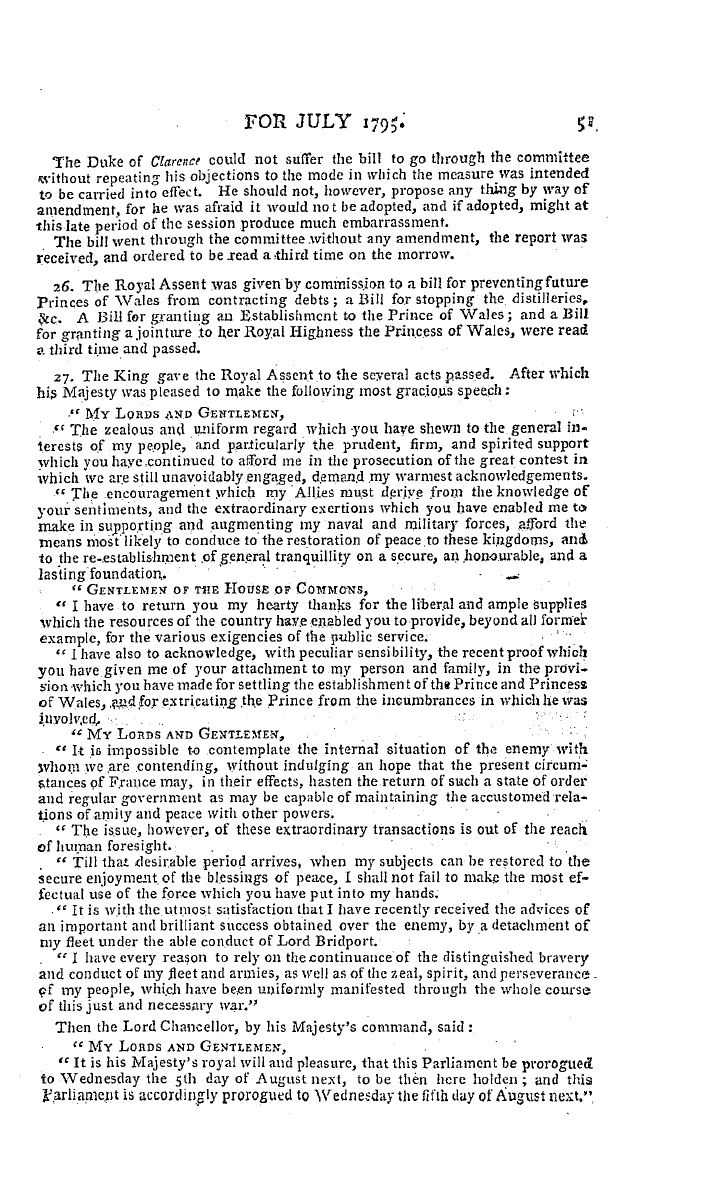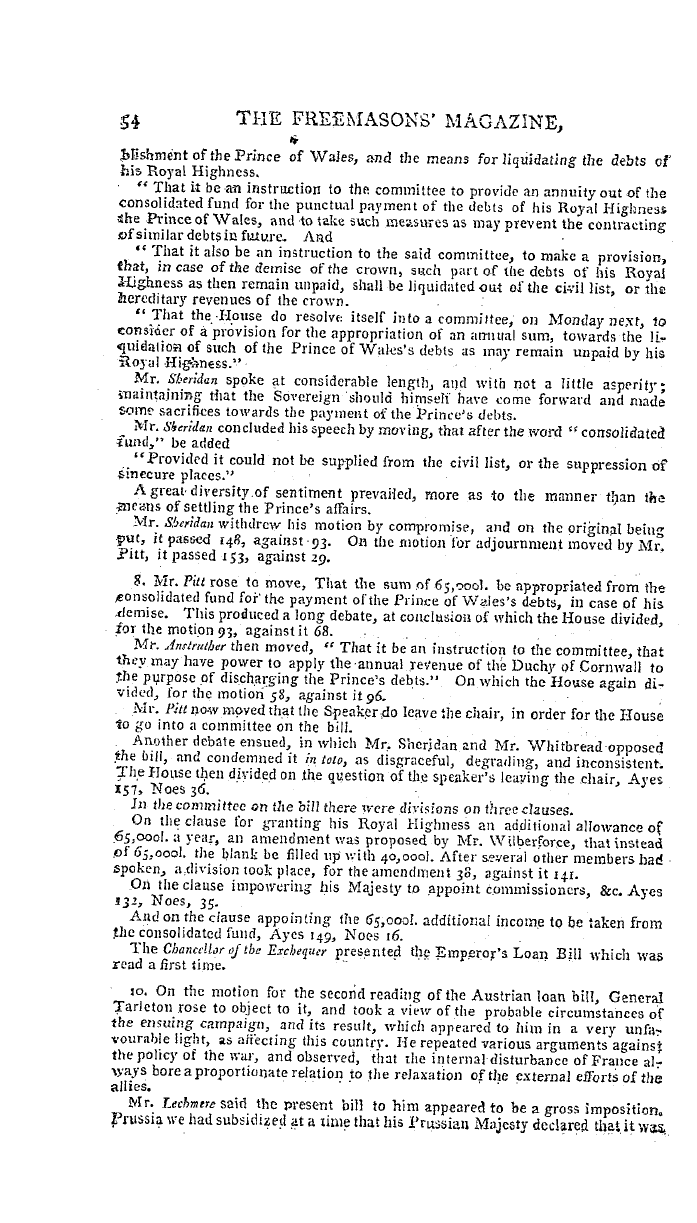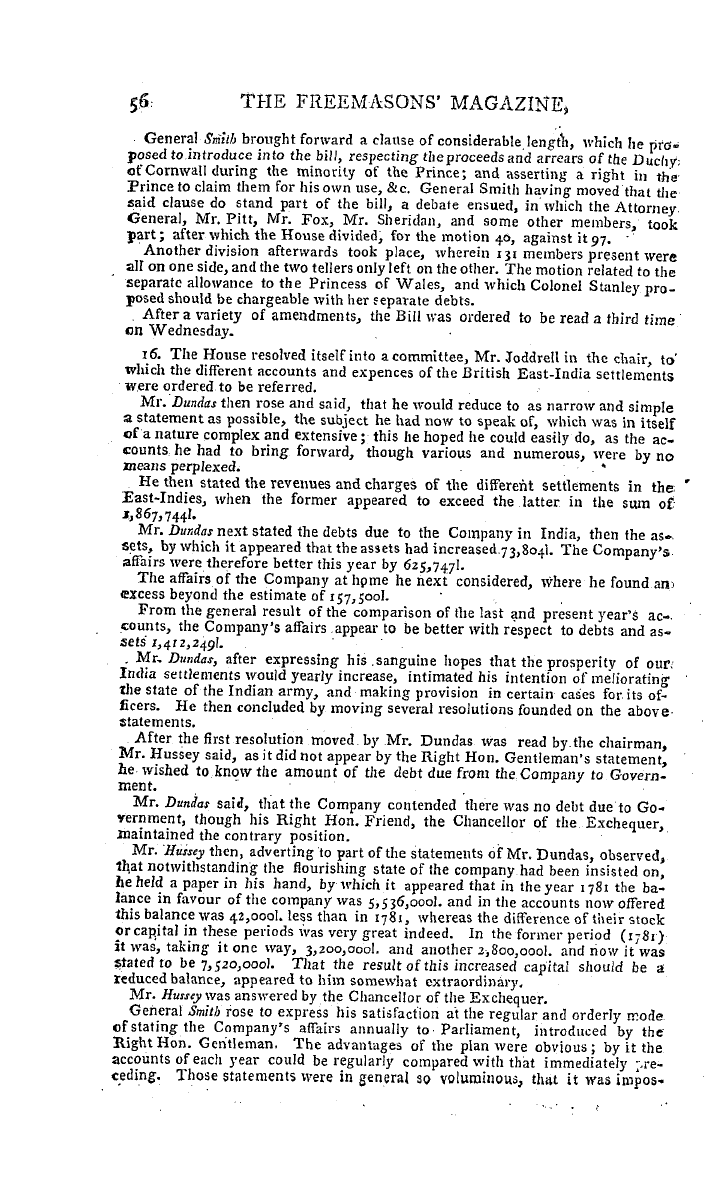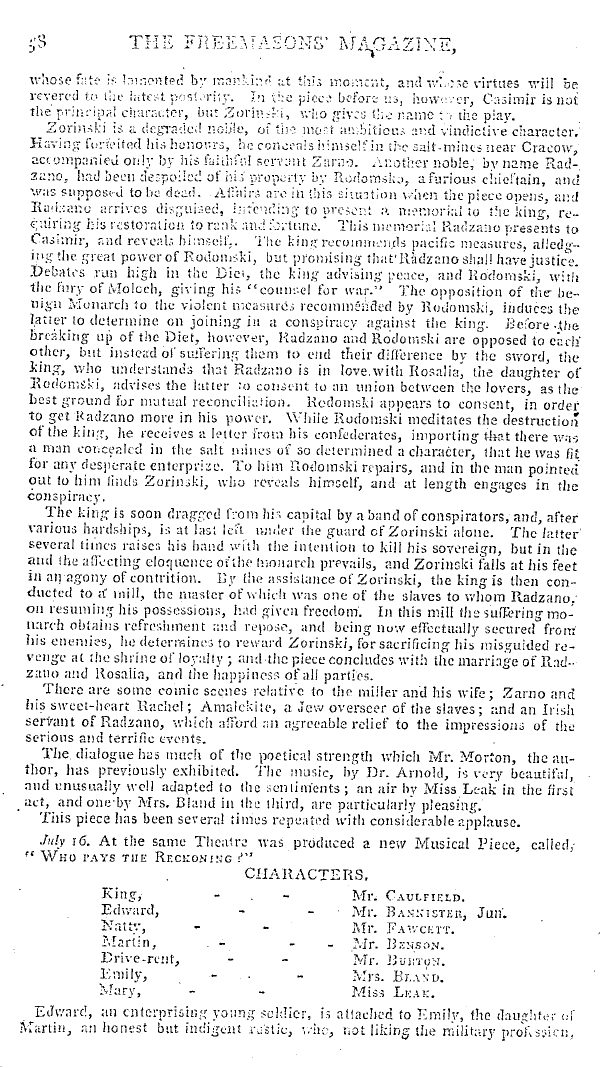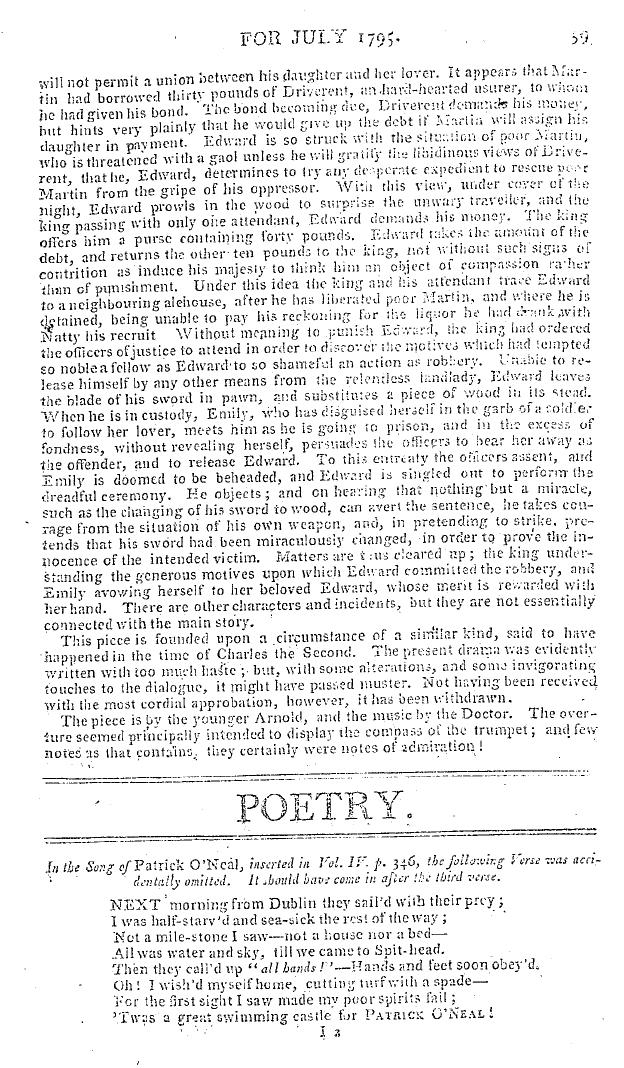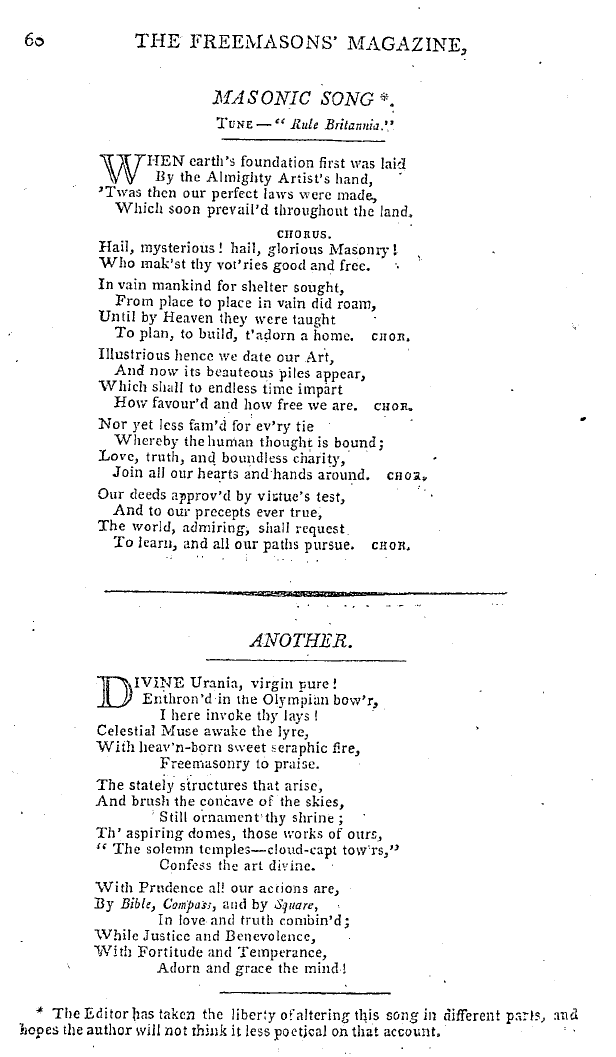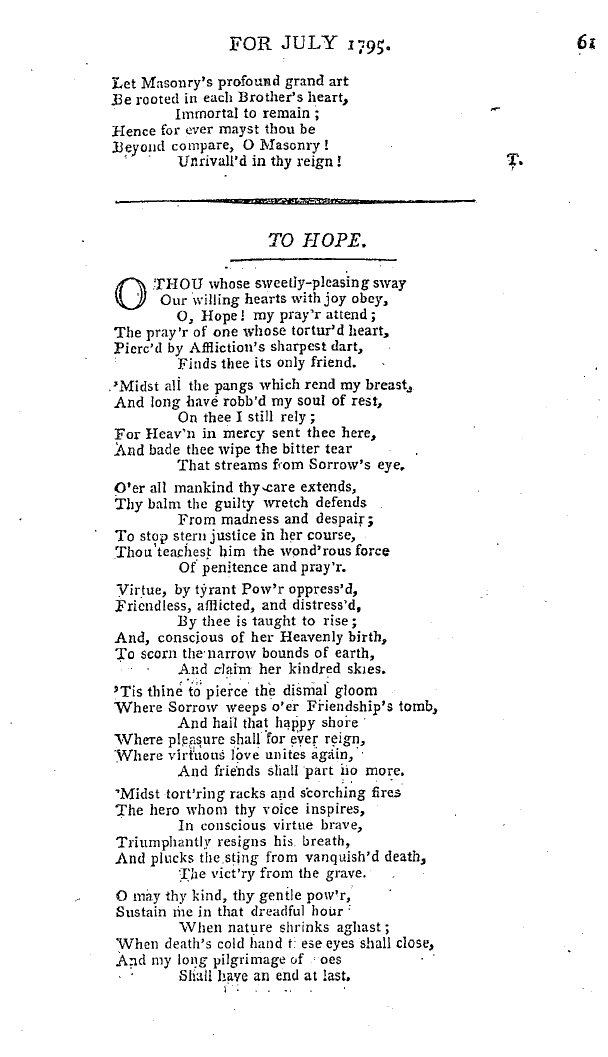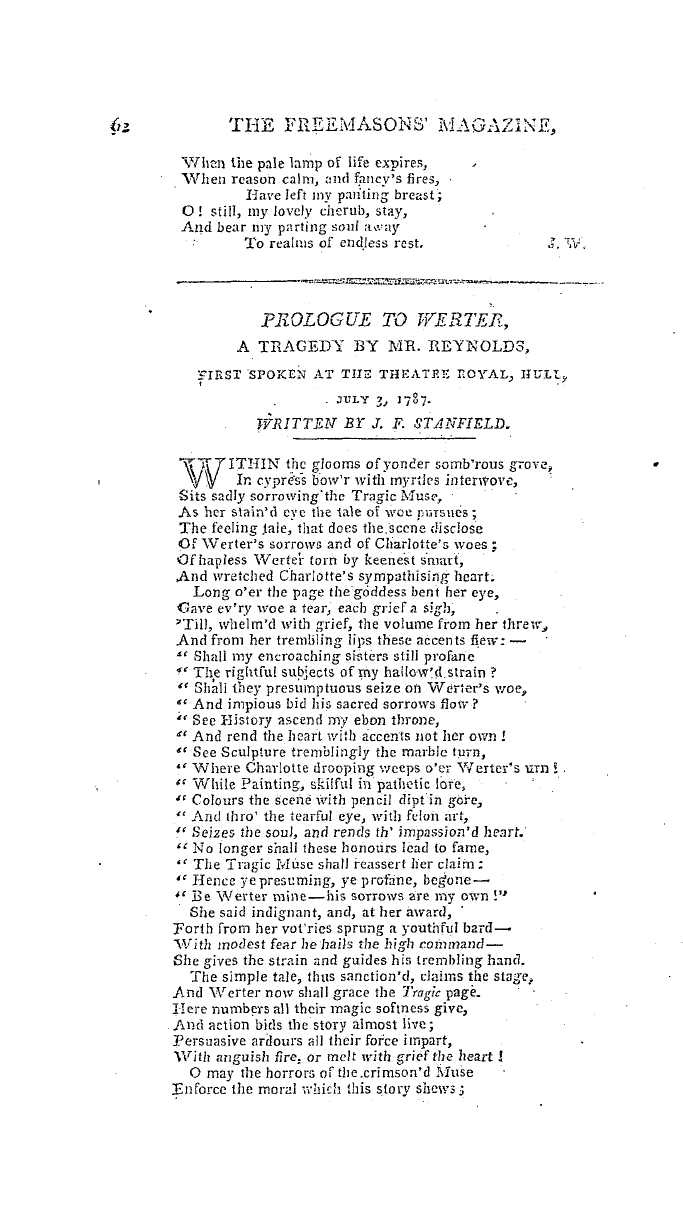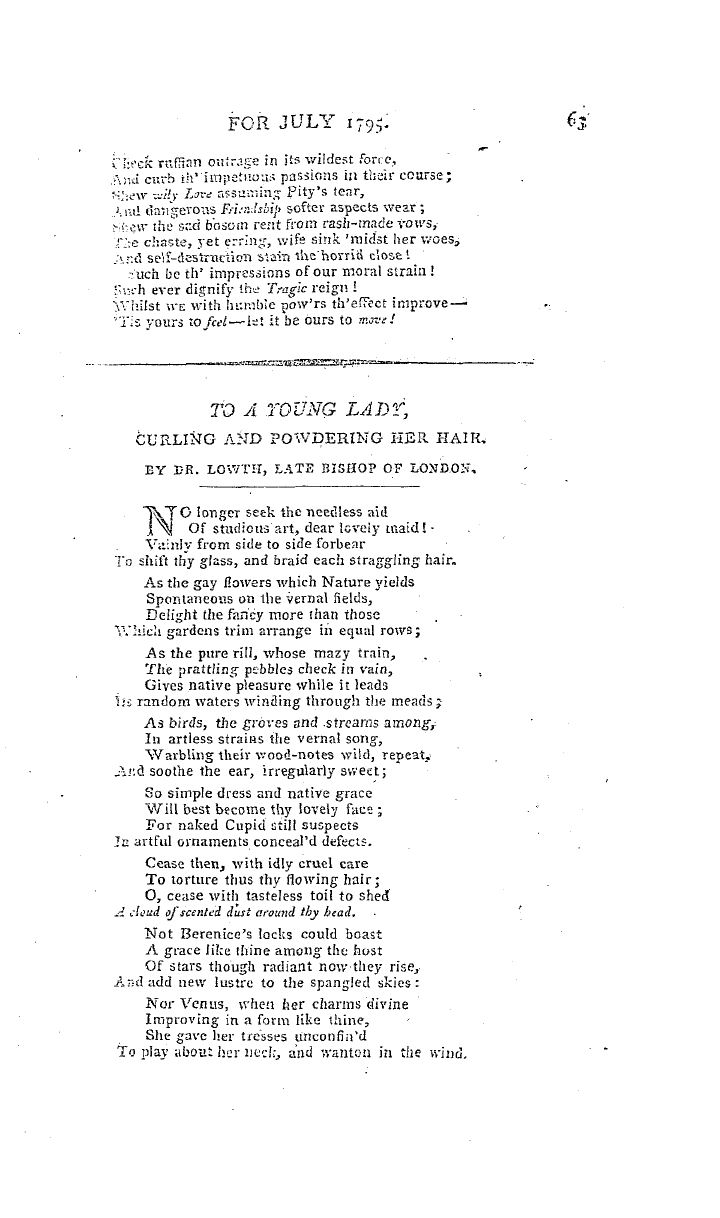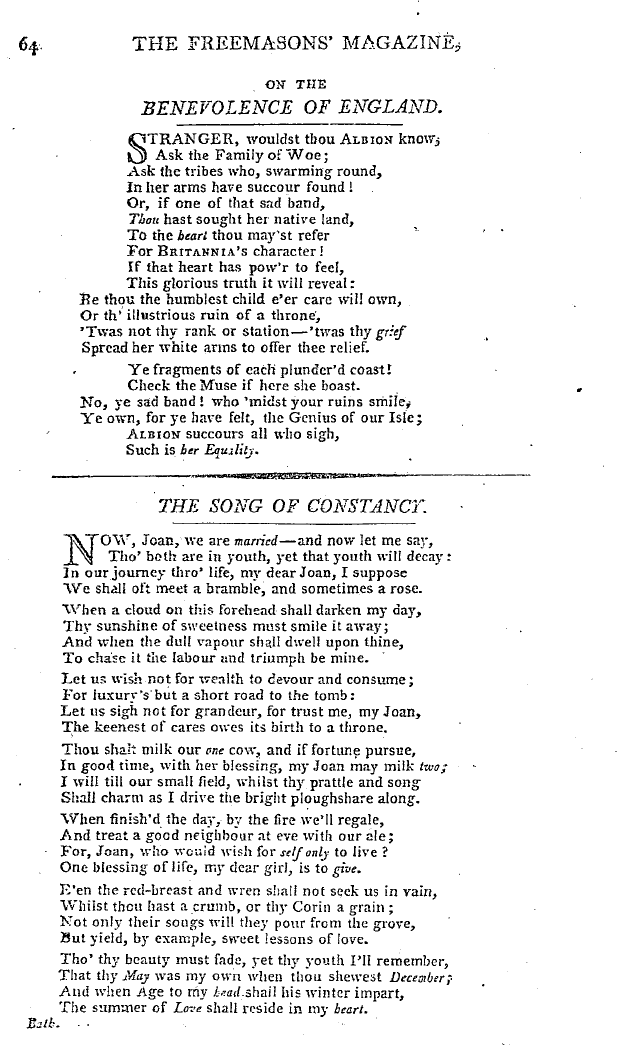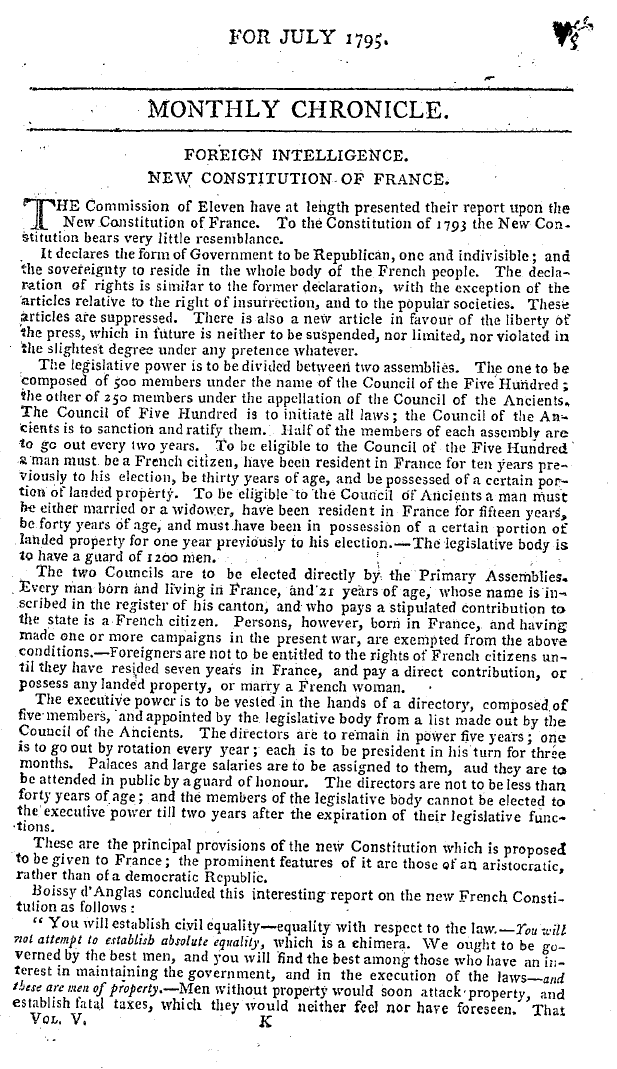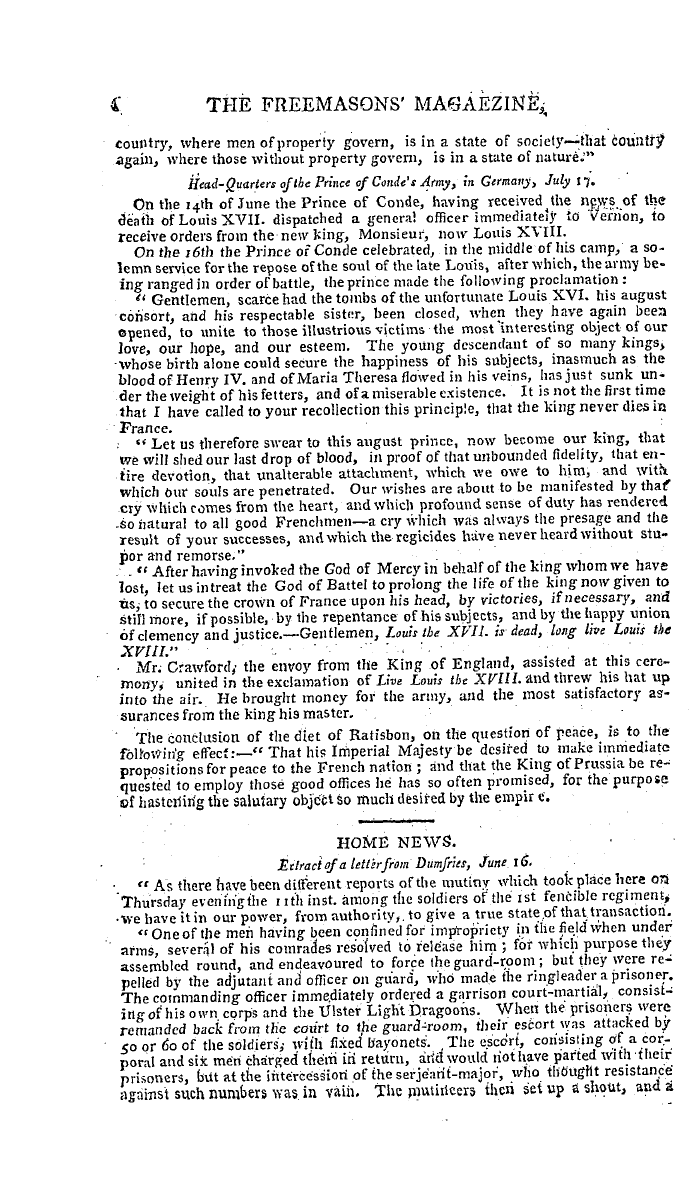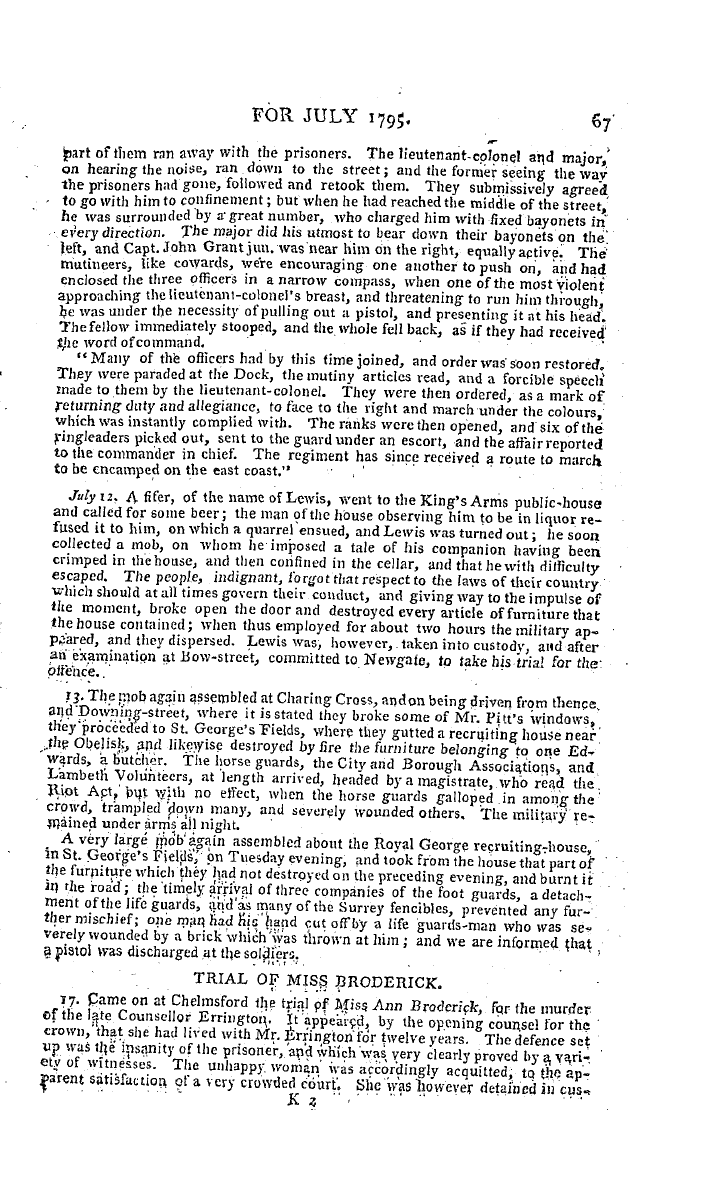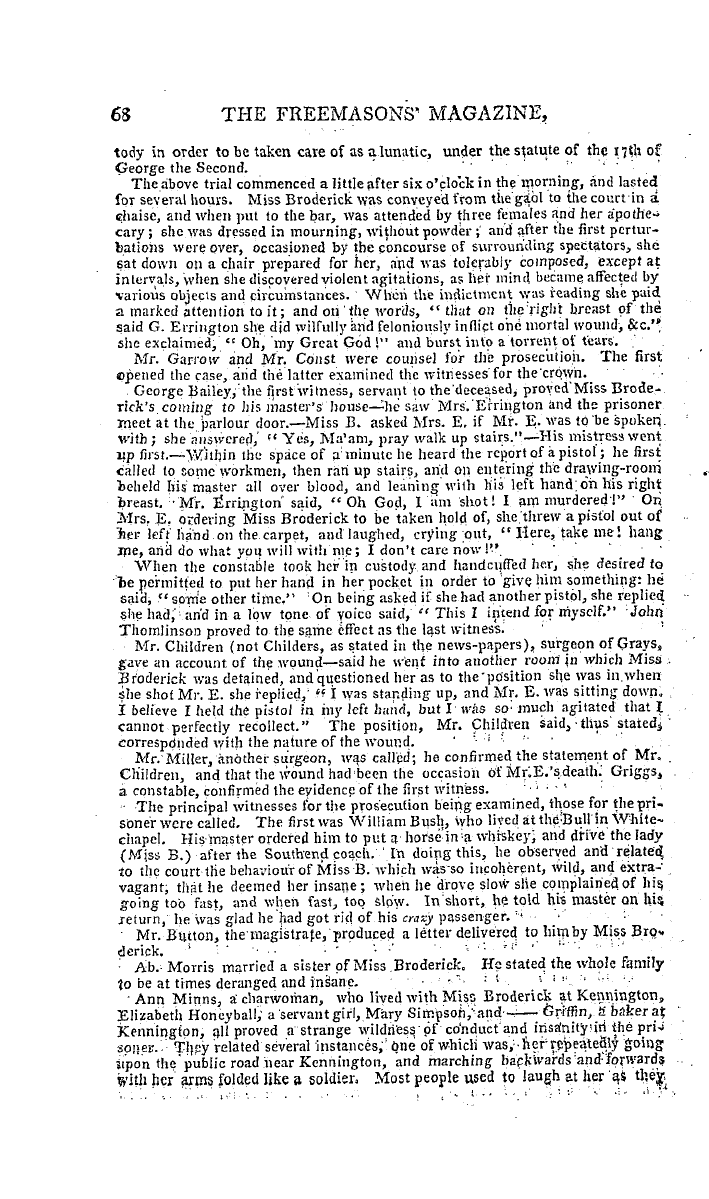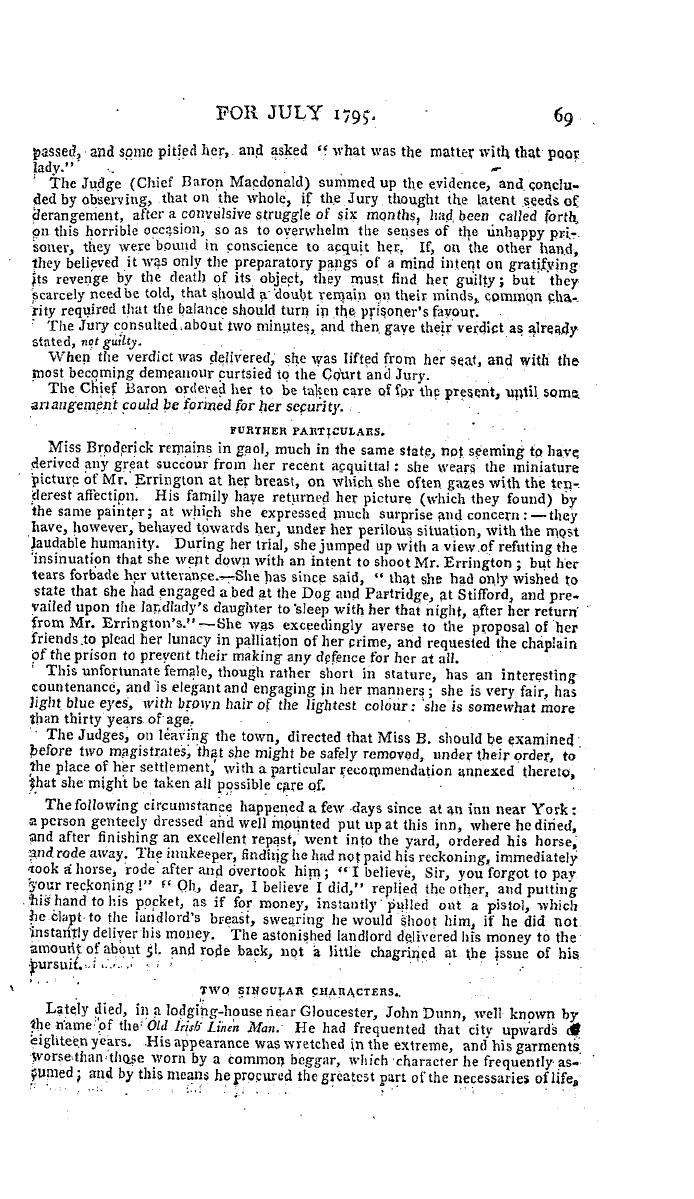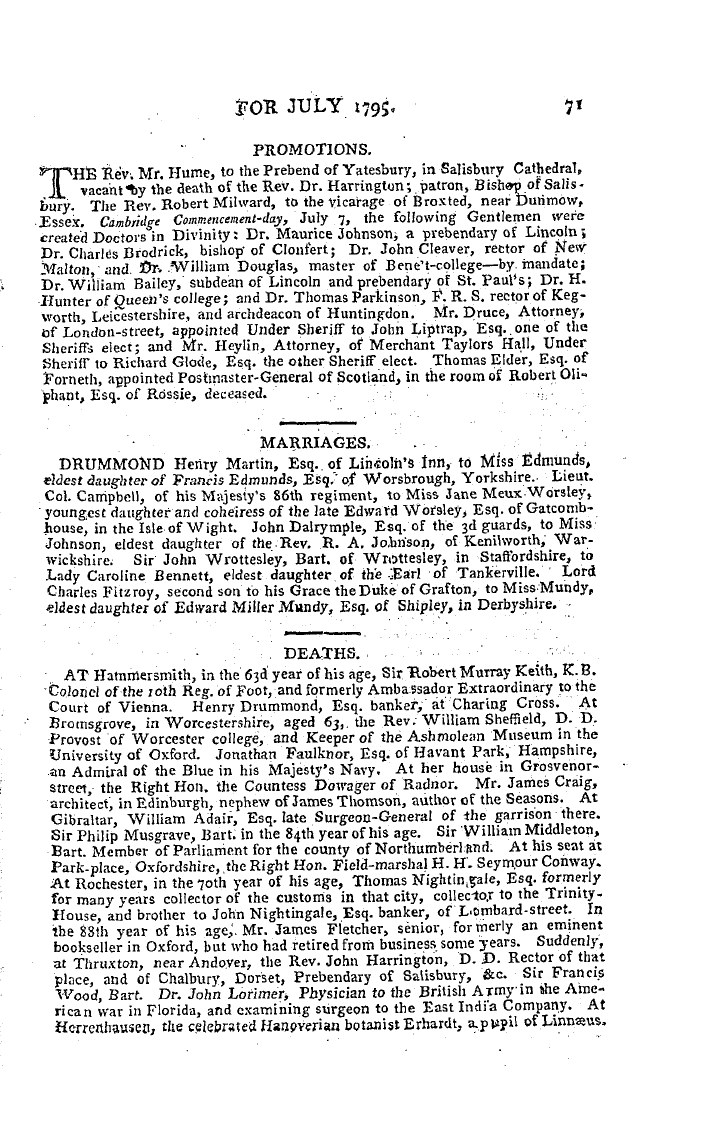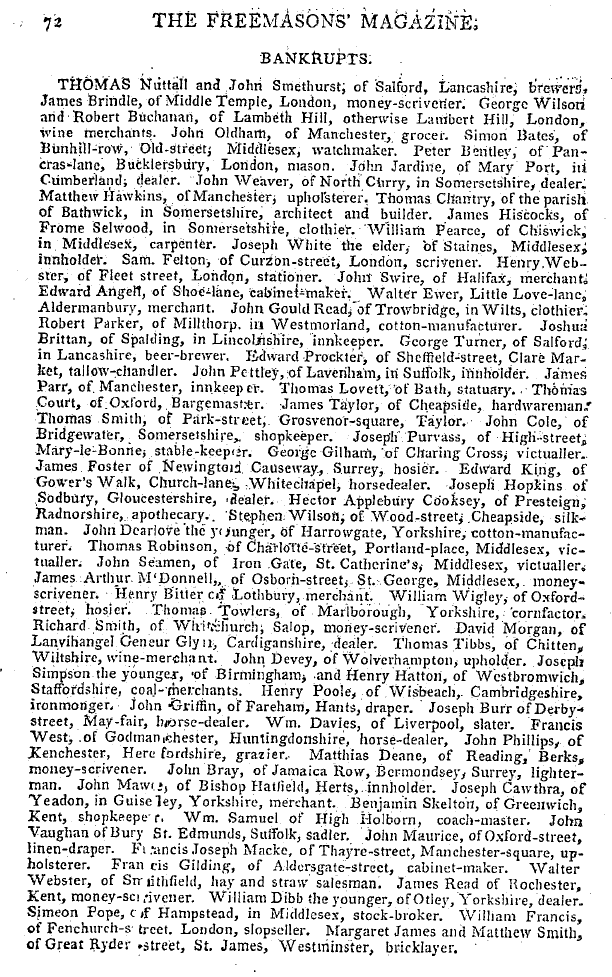-
Articles/Ads
Article THE MURDERER OF CHARLES I. Page 1 of 1 Article DISSERTATIONS ON THE POLITE ARTS. No. II. Page 1 of 5 →
Note: This text has been automatically extracted via Optical Character Recognition (OCR) software.
The Murderer Of Charles I.
THE MURDERER OF CHARLES I .
ASCERTAINED . \ Trom " Anecdotes of Distinguished Persons , & c . " just published . ^
LILLY , in the History ot his Life and JL lines , says , " The next Sunday after Charles the First was beheaded , Robert Spavin , secretary to Oliver Cromwell , invited himself to dine with me , ane * brought Anthony Peirson , and several others , along with him to dinner ; and that the principal discourse at dinner was only , Who it was that beheaded the King ? One said , it was the common hangman anotherHugh Peters ; others also were nominatedbut none
; , , concluded . Robert Spavin , so soon as dinner was done , took me by the hand , and carried me to the south window . These are all mistaken , saith he ; they have not named the man that did the fact . It was LIEUTENANT-COLONEL JOYCE . I was in the room when he fitted himself for the work , stood behind him when he did it , when done went in again with him . —There is no man knows this but my
master Cromwell , Commissary Ireton , and myself . —Doth not Mr . Rushworlh know it ? quoth I . -No ; he did not know it said Spavin . The same thing , " adds Lilly , " Spavin since had often related unto Xiie when we were alone . "
Dissertations On The Polite Arts. No. Ii.
DISSERTATIONS ON THE POLITE ARTS . No . II .
WHAT is the function of arts ? It is to transport those touches which are in nature , and to present them in objects to which they are not natural . It is thus that the statuary ' s chizzel shows or produces a hero in a block of marble . The painter , by his light and shade , makes visible objects seem to project from the canvas . The musicianby artificial soundsmakes the tempest roarwhilst all is
, , , quiet around us ; and the poet too , by his invention , and by the harmony of his verses , fills our minds with counterfeit images , and our hearts with fictitious sentiments , often more charming than if they were true and natural . Whence I conclude , that arts are only imitations , resemblances which are not really nature , but seem to be so ; and that thus the matter of the polite arts is not the true , but
only the probable . This consequence is important enough to be explained and proved immediately by the application . Painting is an imitation of visible objects . It has nothing that is real , nothing that is true , and its perfections depend only upon its resemblance to reality . "Music and dancing may very well regulate the tones ancl gestures of an orator in his pulpit , or of a citizen who tells a story in conver-F :
Note: This text has been automatically extracted via Optical Character Recognition (OCR) software.
The Murderer Of Charles I.
THE MURDERER OF CHARLES I .
ASCERTAINED . \ Trom " Anecdotes of Distinguished Persons , & c . " just published . ^
LILLY , in the History ot his Life and JL lines , says , " The next Sunday after Charles the First was beheaded , Robert Spavin , secretary to Oliver Cromwell , invited himself to dine with me , ane * brought Anthony Peirson , and several others , along with him to dinner ; and that the principal discourse at dinner was only , Who it was that beheaded the King ? One said , it was the common hangman anotherHugh Peters ; others also were nominatedbut none
; , , concluded . Robert Spavin , so soon as dinner was done , took me by the hand , and carried me to the south window . These are all mistaken , saith he ; they have not named the man that did the fact . It was LIEUTENANT-COLONEL JOYCE . I was in the room when he fitted himself for the work , stood behind him when he did it , when done went in again with him . —There is no man knows this but my
master Cromwell , Commissary Ireton , and myself . —Doth not Mr . Rushworlh know it ? quoth I . -No ; he did not know it said Spavin . The same thing , " adds Lilly , " Spavin since had often related unto Xiie when we were alone . "
Dissertations On The Polite Arts. No. Ii.
DISSERTATIONS ON THE POLITE ARTS . No . II .
WHAT is the function of arts ? It is to transport those touches which are in nature , and to present them in objects to which they are not natural . It is thus that the statuary ' s chizzel shows or produces a hero in a block of marble . The painter , by his light and shade , makes visible objects seem to project from the canvas . The musicianby artificial soundsmakes the tempest roarwhilst all is
, , , quiet around us ; and the poet too , by his invention , and by the harmony of his verses , fills our minds with counterfeit images , and our hearts with fictitious sentiments , often more charming than if they were true and natural . Whence I conclude , that arts are only imitations , resemblances which are not really nature , but seem to be so ; and that thus the matter of the polite arts is not the true , but
only the probable . This consequence is important enough to be explained and proved immediately by the application . Painting is an imitation of visible objects . It has nothing that is real , nothing that is true , and its perfections depend only upon its resemblance to reality . "Music and dancing may very well regulate the tones ancl gestures of an orator in his pulpit , or of a citizen who tells a story in conver-F :




























































